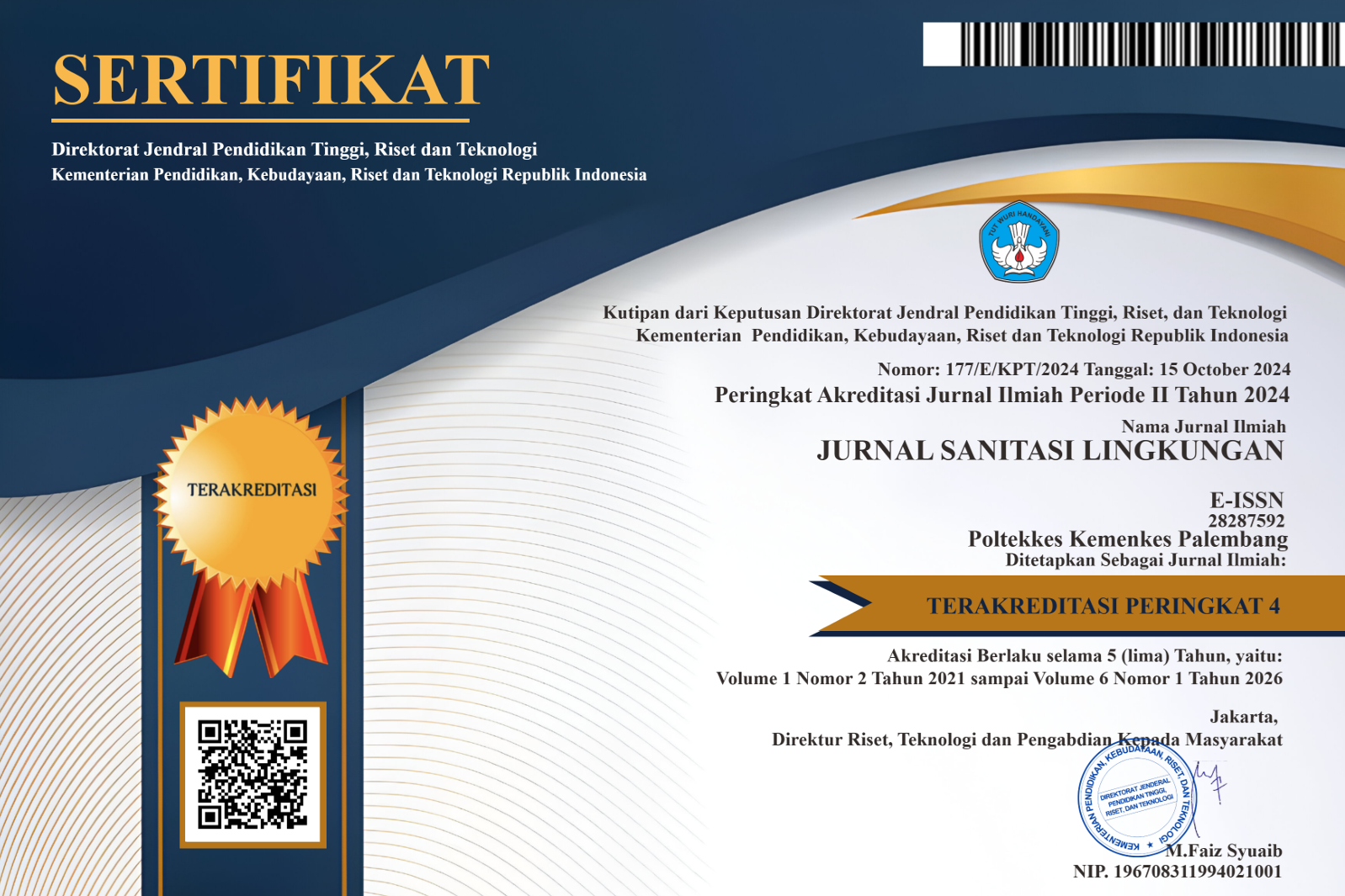Kondisi Sanitasi Lingkungan Rumah Penderita Demam Berdarah Dengue (DBD) di Wilayah Kerja Puskesmas
Abstract
Latar Belakang: Kondisi lingkungan merupakan faktor penyebab nomor dua setelah perilaku dalam peningkatan penyakit demam berdarah terutama di daerah endemis. Penelitian ini bertujuan untuk menganalisis kondisi lingkungan rumah penderita demam berdarah di wilayah kerja puskesmas.
Metode: Penelitian ini merupakan penelitian observasional dengan rancangan potong lintang. Jumlah sampel sebanyak 45 sampel yang merupakan total populasi. Data dikumpulkan dengan cara wawancara dan observasi ke rumah penderita demam berdarah. Analisis data dilakukan dengan cara univariat dan data disajikan dalam bentuk tabel.
Hasil: Hasil penelitian menunjukkan bahwa kondisi tempat penampungan air yang terdapat endapan sebanyak 100% dan tempat penampungan air sementara yang tidak tertutup sebanyak 68,9%, serta 86,7% ditemukan adanya jentik nyamuk. Ditemukannya sampah kaleng bekas di sekitar rumah sebanyak 100% dan 60% tidak dilakukaan penanganan dengan baik. Ventilasi rumah yang tidak berkasa sebanyak 62,2 % dan pakaian bergantungan di rumah sebanyak 100%.
Kesimpulan: Kondisi lingkungan rumah diantaranya tempat penampungan air, penanganan sampah, ventilasi dan pencahayaan merupakan penyebab kejadian Demam Berdarah Dengue terutama di daerah yang endemis DBD.
Kata kunci : Kondisi lingkungan, Demam Berdarah Dengue
ABSTRACT
Background: Environmental conditions are the second leading factor after behavior in increasing dengue fever, especially in endemic areas. This study aims to analyze the condition of the home environment of dengue fever sufferers in the working area of the public health center.
Methods: This study is an observational study with a cross-sectional design. The number of samples is 45 samples which is the total population. Data were collected using interviews and observations at the homes of dengue fever sufferers. Data analysis was carried out in a univariate way and the data was presented in tabular form.
Results: The results showed that the condition of water reservoirs that contained 100% sediment and 68.9% of temporary water reservoirs that were not closed, and 86.7% found the presence of mosquito larvae. 100% of used cans were found around the house and 60% were not handled properly. Home ventilation that is not screened is 62.2% and clothes hanging at home are 100%.
Conclusion: The condition of the home environment including water reservoirs, waste handling, ventilation, and lighting is the cause of the incidence of Dengue Hemorrhagic Fever, especially in areas where DHF is endemic.
Keywords: Environmental conditions, Dengue Hemorrhagic Fever
Authors who publish with this journal agree to the following terms:
- Authors retain copyright and grant the journal right of first publication with the work simultaneously licensed under a Creative Commons Attribution License that allows others to share the work with an acknowledgement of the work's authorship and initial publication in this journal.
- Authors are able to enter into separate, additional contractual arrangements for the non-exclusive distribution of the journal's published version of the work (e.g., post it to an institutional repository or publish it in a book), with an acknowledgement of its initial publication in this journal.
- Authors are permitted and encouraged to post their work online (e.g., in institutional repositories or on their website) prior to and during the submission process, as it can lead to productive exchanges, as well as earlier and greater citation of published work














